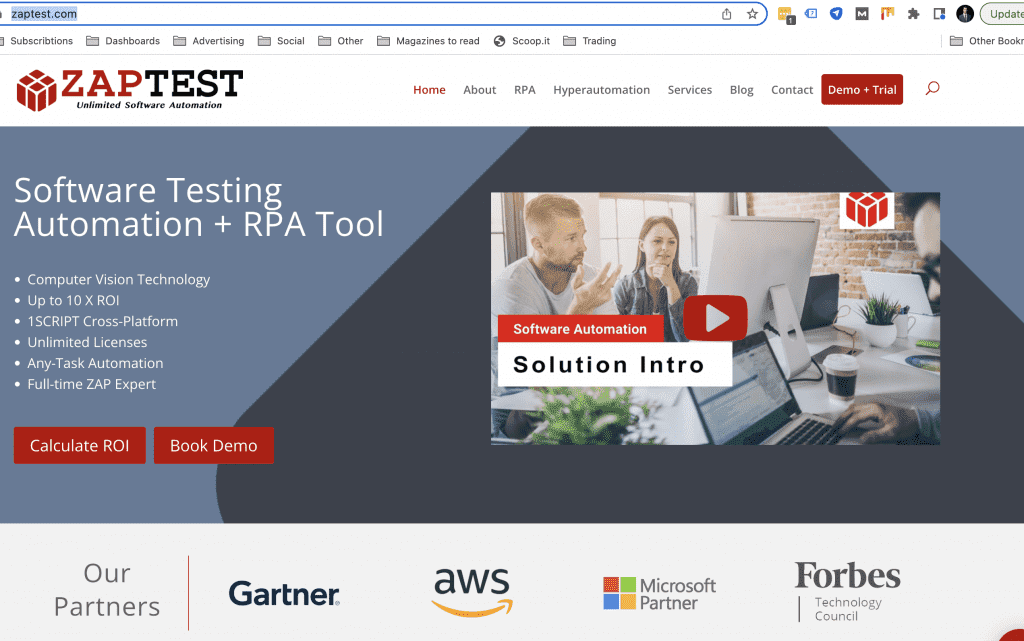As innovation continues to push the boundaries of what is possible when developing software, utilizing testing as a centralized service is becoming increasingly popular.
Organizations have a vested interest in discovering successful ways to send testers across several teams; the goal is to do this not at the expense of giving up excellent practices and standardization, which QA organizations work tirelessly to make, test, and sustain.
Incorporating a Testing Center of Excellence can be the solution to sustaining standardization across your teams and ensuring that testing innovation gets prioritized within your organization.
Test teams must follow precise steps to implement a successful TCoE. That includes impact analysis, planning, assessment, organizational adjustments, tool selection, and objective setting.
What Is a Testing Center of Excellence (TCoE)?
A Testing Center of Excellence is skilled at helping companies optimize application performance tests and quality to enhance the synergy between IT and business, do more with their tools, QA budgets, people, and environment and increase QA efficiency.
A TCoE is a resourceful virtual command center that utilizes metrics, automation, standardized testing methodology, tools, and best practices. Before deployment and during production, TCoE manages a versatile collection of available resources to ensure that the quality is uniformly high across all applications.
Moreover, it provides a tangible way to view and monitor the quality of any project or software system. The TCoE grants IT management the ability to make deployment choices from a business risk perspective.
The blend of QA processes, human resources, and tools lets TCoE strengthen organizations, allowing them to properly incorporate an automation testing process for the TCoE while enhancing manual testing outcomes and productivity.
When Do You Need a Testing Center of Excellence (TCoE)?
There is always pressure placed on the TCoE testing teams to speed up development time without jeopardizing quality. Relying solely on traditional quality assurance methods is insufficient because they cannot keep pace with ever-demanding software that’s efficient, robust, and time-bound software. Long are the days when testing was performed on one platform, device, browser and singular execution. Nowadays, complex organisations require tools and processes to operate cross-platform, cross-application, cross-browser, parallel execution, live/recording status, and so much more.
As one of these organizations, you may require to test on a variety of platforms like Linux, Windows, Android, iOS, web, and conduct a variety of tests from load tests, performance tests, UI tests, QA tests, to complex regression testing, unit tests, functional tests, integration testing, UI tests, complex API tests, and many many more!
This change has been a leading factor for companies across the board to explore the idea of creating a centralized testing service.
Pros & Cons of Setting up TCoEs
Before taking strides towards incorporating a Testing Center of Excellence, you must look at it from different angles and consider the positives and negatives.
Pros
1. Improved Core Skills:
By implementing Testing Center of Excellence best practices, you are actively investing in the overall skills of your testers through innovation and training, which translates to higher quality products for your targeted customers.
2. Test Automation:
By settling on a strict automation framework, you can rest assured that all your teams will follow basic coding methods. As a result, there are shorter execution times and scripting cycles, improved coverage and testing quality, and reduced time when onboarding new engineers for automation.
3. Better Agility:
By requiring every tester to work within a specific domain, it allows for the versatility for tasks to shift at the drop of a hat without the drawback of testers having to leave different tools and processes across teams. Moreover, scaling teams using an outsourcing model gives people the freedom to be consistently and quickly onboarded.
4. Make Improvements:
Undoubtedly, the main reason for having a comprehensive TCoE is the perpetual modernization of processes and tools. A team devoted to this end ensures that you continually operate in the latest modern testing world.
5. Save Money:
Implementing standardized tools across teams can result in sizable cost savings for your organization over a certain period.
6. Decrease Testing Costs:
A study by the HCL illustrated that a TCoE led to an 11 percent decrease in the prices for testing within the organization.
Cons
1. Overly Complicated:
If you are someone with one or maybe even two teams with static testers, the tools and processes are relatively the same. In this case, adding an extra layer may complicate things needlessly, ending in frustration and delayed releases.
2. Lack of Commitment:
If you choose to incorporate a TCoE without the help of your organization on all levels, it can result in your members feeling burned out and discouraged. More specifically, if there is no complete backing of the tools and process recommendations are not appropriately adapted, things can go awry.
Examples of Where TCoEs Can Be Implemented
Below are some areas where you should consider implementing a TCoE:
1. You Want To Learn Tech and KPI Trends
Providing quality across several teams can be difficult, especially if you don’t have a group or a single person designated for the job. In such situations, it can help you to see differences in the way the teams track specific KPIs while others may not track any at all. It can measure quality and metrics throughout your company, lessening or removing the task entirely.
2. Engage in Homogenization Processes
The primary function of a Testing Center of Excellence is to standardize tools and processes across all teams. The units can spend less time defining and incorporating several unnecessary variations through standardization.
Additionally, the setup facilitates cross-team communication regarding guidelines and best practices related to scripting, execution, and automation.
3. Quality Assurance Alignment With Projects Over the Organization
When no centralized testing framework is available, testing teams will report to individuals and therefore lose the opportunity to share a common goal or direction.
Through the implementation of TCoE, all testing functions are placed in one central and convenient place, ensuring that the operations are on the same page with a singular mission and vision aligned with the organization’s goals. That adds more visibility and clarity to quality assurance from the management’s perspective.
When You May Not Need a Testing Center of Excellence
It would be unwise to try centralization across several product teams if even one of the team members relies on institutional knowledge as their methodology. This is also true if, rather than relying on abstract functional models, a team’s processes rely on named individuals.
Similarly, it would help if you didn’t move product groups into a Testing Center of Excellence without first seeing that the essential tools are standardized, like test case repositories and defect databases.
Does Your Business Need a Testing Center of Excellence (TCoE)?
When amongst a significant organizational shift, thoroughly understanding your gaps and examining your company’s current state is essential when deciding whether TCoE suits your organization.
Take the necessary time to ensure that you have correctly identified what your Testing Center of Excellence is or isn’t, and choose the right individuals for the job.
Crucial to successful TCoE implementation is ensuring testers with excellent communication and collaboration skills; they must also have a comprehensive understanding of the testing principles.
Don’t forget to figure out how you will identify and measure the success of your organization. If you need to use KPIs, relay this information to your team to understand how you will measure success.
What Are the Main Characteristics of a Testing Center of Excellence (TCoE)?
While a Testing Center of Excellence assists organizations with quality and planning, there are a few main characteristics to identify a TCoE.
1. Automated Testing Framework
Suppose your organization doesn’t have a centralized test automation Center of Excellence framework. In that case, there is a strong possibility that your team won’t share the common goals of your company, or perhaps they will deviate from the path intended to be used to meet business objectives.
The Testing Center of Excellence framework allows organizations to achieve business goals through consolidated testing functions.
2. More Testing
One culprit of limited project visibility is a lack of synergy between cross-functional teams, which hinders economy of scale. The Testing Center of Excellence guarantees unit coordination according to their core skills regarding technology across projects. Also, there is no dependency on cross-platforms allowing for optimal use of your resources.
The quality testing team has its own workspace to give them the necessary space to execute testing without damaging the software development progress. Additionally, the staff can conduct parallel tests for several projects in various environments.
3. Visibility Across Teams
Typically cross-functional teams do not have the visibility to accurately calculate the return on investments due to testing, and there’s no viability regarding the total cost involved in the testing. TCoE features tracking based on metrics, allowing it to measure your testing performance and the ROI generated from testing.
TCoE simplifies the typical challenges associated with an organization, such as measuring test efforts and their efficacy, uncovering defects, and monitoring test coverage. You will have centralized visibility and clarity at your disposal for stakeholders, thanks to the real-time analysis and the available error report to aid in making a better application.
What Are the Benefits of a Testing Center of Excellence (TCoE)?
Incorporating a Testing Center of Excellence for your company has several benefits, such as the following:
1. Increased Delivery Schedule Optimization
By using templates and automating redundant tests, test execution gets drastically reduced. By merely incorporating standard processes, you can speed up the resolution process according to priority and decrease downtime between usual tasks.
2. Better Performance Testing
Implementing a Testing Center of Excellence consolidates QA rules and actuates them. That minimizes the effect of typical project risks while increasing product quality simultaneously. Additionally, your unit creates a repository to increase the number of identified bugs and help reduce late deliveries.
3. Cost-Effective Solutions
Your business can use the services, and due to labor arbitrage, they can do it at a low cost, possibly leading to cost savings. Through the optimization of resource utilization, you can save costs in the form of software procurement, maintenance, and setup.
4. Group Adherence
A Testing Center of Excellence will allow the secure alignment of your business goals. You can achieve this by developing a software testing governance model based on a system of measuring, discussing, and reporting KPIs.
What Are the Misconceptions Related To Setting up a Testing Center of Excellence (TCoE)?
Below are a few myths that we address about the Testing Center of Excellence:
1. Anyone Can Perform QA Testing
Given a particular line of business, experts in QA will know their relevant software thoroughly and be aware of all possible testing and development complications. TCoE consists of software matching the competency of highly skilled QA professionals and the benefits of the consolidated QA standards.
2. A TCoE Is Too Expensive
Although investing in TCoE may seem very expensive, you should first contemplate the possibility and cost of error.
Consider all the costs of purchasing bug fixes and patches that are likely required once glitches become apparent after the product’s release. You will most certainly spend more on getting a reduced ROI when trying to patch up the defect in your product. Your organization can avoid this by investing in a quality TCoE.
3. Communication Between All Parties Is Too Chaotic
It’s easy to assume that communication will be a nightmare when trying to coordinate between various test teams with different roles and knowledge bases.
However, the test manager and leader must set a precedent for problem resolution and questions while reinforcing protocols and expectations from the beginning. This tip will avoid future problems that could hinder the TCoE success.
How To Set up a TCoE
Follow this template if you’re interested in setting up a Testing Center of Excellence.
1. Outline the Challenges
Your Testing Center of Excellence strategy should be able to standardize processes and tools at the very least. You can also add custom features to define and measure existing or new KPIs, discover productive technologies, or onboard more QA resources to your team. Don’t try to create a testing COE without first outlining the problems that need solving.
2. Select Experts
Make decisions around who will be involved in your TCoE testing that can lead and represent the testers as a whole. You might choose to go with a third party to take more responsibility off your hands for selection, or you can keep it in-house.
3. Create a QA Center of Excellence Roadmap
Every business has specific needs they want to address and a list of desired solutions. Highlight problem areas within the organization, develop a priority ladder, and ensure everyone is on the same page by creating a QA Center of Excellence.
4. Define Group Communication
This step is where strong leadership has a massive impact. How will your testing COE framework implement new tools and processes while ensuring everyone follows protocol?
How can you obtain maximum adherence to the TCoE? When you make it clear who team members can go to for guidance and the consequences for abandoning the framework, it limits mistakes between the teams in the future.
5. Well-Documented KPIs, Tools, Methodologies, and Processes
Before and as you are executing your plans for a test automation Center of Excellence, you will use pre-existing tools and processes to carry out various functions. Create written policies that outline expectations moving forward. This repository will also be valuable when onboarding new members or if there is confusion amongst testers.
6. Deficit Analyzation
When you begin your test automation CoE, there may be some areas where deficiencies must be a priority, especially if you intend to keep things in-house. A good leader would understand the gaps and work with members to make them feel included and that their contributions are valued.
What Are the Costs and Resources Required To Set up a Testing Center of Excellence?
While tools are necessary to create Testing Center of Excellence best practices, you can expect to need a broad range of tools and resources before you start.
1. Software and Testing Tools
We will cover this section further down the line, but software tools and testing resources are necessary when building a Testing Center of Excellence. You will want to invest in a document repository, standardized testing tools, efficiency metrics, and more.
2. Team Development
Bringing on or assigning dedicated individuals fully committed to the automation testing process is essential to the success of the TCoE. You will need experts for the test lead, test manager, test architect, and other positions within the group.
These people will be the main assets outside of the technologies you are using. They will use their competency to assess the localization testing process, application testing methodology, performance testing methodology, and more.
How Should You Test the Efficiency of Your TCoE?
You can use various metrics to determine how efficient your performance Testing Center of Excellence strategy is and if it has reached defined goals. KPIs (key performance indicators) are a great way to measure success effectively.
1. What KPIs Should You Set up To Monitor Performance?
Select which performance indicators you want to use upfront. It will help you know whether your TCoE is actually helping the organization or if things are the same as before implementation. As you adjust current processes and add new ones, the best KPIs will help you bridge the gaps.
Consider these popular KPIs to measure TCoE success:
- Missed Bugs Rate: This KPI measures quality enhancement. Use this indicator for determining whether a project met quality standard goals, add to an AUT, and more.
- Test Costs: This KPI is handy for test budget and QA optimization. You will find where tweaks are necessary by computing test cost averages before and after establishing the COE. Save nearly 35 percent in three years with an effective TCoE.
- QA Maturity: One of the biggest goals of a performance testing COE framework is enhancing quality assurance. Everyone has to buy into the goal of improvement and customer satisfaction.
You can use Test Process Improvement (TPI) or Test Maturity Model Integration (TMMi) to measure QA maturity and the efficacy of established methodologies.
Technologies & Tools Required To Establish a Testing Center of Excellence
Here are various forms of tools and trending technologies used to build a TCoE:
1. Tracking and Project Planning Tools
Use these tools to develop and track the design of experiments during software testing. The most notable tools are Microsoft Project Planner, Trello, and JIRA.
2. Log Analyzation
Any app that you use will generate a log over time. When you’re testing, this information can be beneficial for testers. They can add the records to their bug reports to understand, analyze, and repair deficiencies. Try Elastic Stack, Nagios, LOGalyze, and Graylog.
3. Performance Testing Tools
Use a performance testing tool to ensure that your preferred app meets quality assurance standards when the load varies. The system should be stable and able to handle computations at a high level.
Many performance testing tools measure reliability, speed, scalability, response time, and resource usage. Include tools like ZAPTEST to your software testing governance.
Roles You Need in a TCoE
Technical and testing specialists collaborate to leverage methodology, resources, technology, and testing knowledge across engagements. These members will supplement the testing tools within every project.
1. Test Manager Responsibilities
The Test Manager has to lead testing teams. They must understand the aspects of testing and how to institute a testing process as they fulfill traditional material roles. A Test Manager is vital to a robust framework, cost-effective solutions, and fluid communications and teamwork.
Test Manager duties typically include the following:
- Establish and maintain SLAs (service-level agreements)
- Provide knowledge to test teams regarding SLA
- Manage the testing center’s budget as well as human resource
- Take on test issues and find resolutions
- Web testing methodology implementation
2. Test Lead Responsibilities
The Test Lead must react quickly to change and adapt to versatile situations as problems arise between teams. It is a challenging position that is equally integral to TCoE’s success.
The Test Lead must:
- Keep test specialists readily available
- Outline and execute role testing within the organizational framework
- Develop the scope of testing for release and delivery for every project
- Implement the appropriate metrics and measurements
- De-escalate conflicts between teams to ensure efficient testing
3. Test Architect Responsibilities
The Test Architect keeps the big picture for your TCoE at the center of the setup and during testing. Typically, senior testing personnel with vast experience at all levels should take this position, as it comes with numerous responsibilities. They work closely with all other roleplayers to meet deadlines and goals.
Test Architect duties include:
- To be an advocate for the evolution of TCoE architecture
- Integrate methodologies, processes, and tools such as software robotics for a more cohesive experience
- Formulate short and long-term test architectural goals
- Use the appropriate software to meet testing goals
- Do QA checks within each test team to ensure they are following protocols
4. Test Methodologist Responsibilities
The Test Methodologist has similar roles to the Test Architect in providing the procedures, templates, and processes to facilitate effective test designs and testing.
The responsibilities of a Test Methodologist include:
- Provide a Proof of Concept template for software testing
- Work with the test teams to continuously improve performance
- Evaluate and recommend suitable application testing methodologies
- Provide educational resources about testing methods and software testing
- Administer software, hardware, and applications to meet testing goals
10 Most Important Steps in Building a Testing Center of Excellence (TCoE)
Ensure that you follow these ten steps as you develop and implement your Testing Center of Excellence:
1. Executive Commitment
The dedication to quality starts at the top. Retaining executive support is crucial to setting the foundation for your TCoE.
2. Be Honest
When you select leaders for the testing teams, you must prepare those individuals to be honest and realistic about goals and expectations with everyone involved. There can’t be any conflicts of interest or partiality. The experts you choose have to represent the epitome of organizational success.
3. Understand the Risks and Rewards
There will be a trade-off between risks and rewards, as TCoE is an investment worth making. Don’t expect to see zero bugs or defects within your projects. You’ll likely have to compromise to achieve optimal quality assurance in competitive fields.
4. Defect Prevention and Detection
The QA team is critical when testing software and during your development of the Proof of Concept template for software testing. Detecting defects during the design and requirement phases saves time and money versus catching them in the production phases.
5. Evaluate Integration Barriers
Focusing on end-to-end integration also boosts productivity and prevents barriers further down the line. Noticing defects regarding customer experience should always be a part of any system implementation that does well with software testing.
6. Make Tests Automatic
You’ll find that many organizations have inefficient and manual testing processes. For optimal performance, automate and operationalize the most critical tasks to assist with QA efforts. Companies should widely implement hyperautomation technology from companies like ZAPTEST in reporting, lab management, data creation, and more at an enterprise level; where you can consolidate your team skills and automated framework artifacts: reusable scripts; test data; function libraries; object repositories, and many more… that will result in overall optimizing your automation process
7. Make Tools, Processes, and Testing Methods Standardized
You don’t need customized tools or methodologies. Do what works! If you simplify the processes, you can avoid missteps, save time and money, and get immediate benefits. Make things as smooth as possible through implementing automation processes that create accurate results.
8. Use Accurate Data
Manage by facts instead of opinions to guide your TCoE development. If you always have data-driven results in hand when making decisions, it not only gives more credibility to your efforts but also adds value to the overall framework.
9. Strive for Continual Improvement
When you set up a TCoE, you should always be looking for ways to get better. It’s imperative to relentlessly improve the QA process by conducting root-cause analyses or trial and error. Look at trends that have developed over time, what has worked and has been a hindrance, and build upon those processes.
10. Assemble Specialists With Excellent Communication
You’ll probably have an assortment of people working within your COE. Everyone must constantly communicate with employees, outside vendors, contractors, and others. They’ll need to rely on one another’s knowledge, be dedicated, and perform at high levels at all times. Choose highly skilled and reliable workers to get the best out of your testing center.












